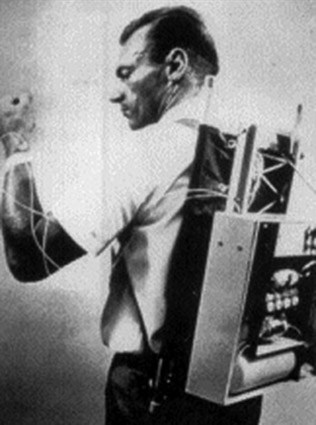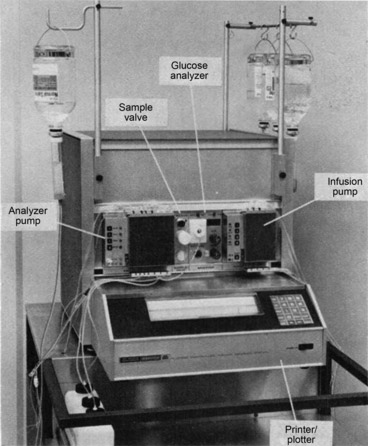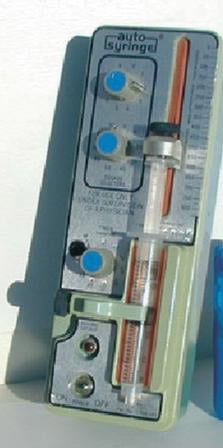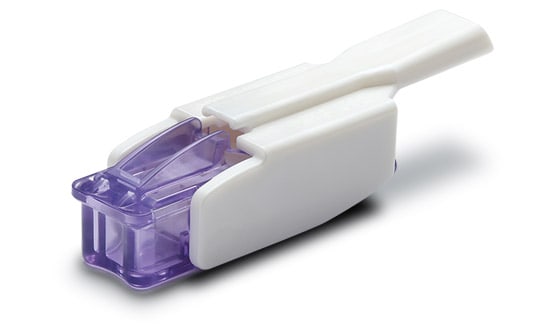
This blog post on the evolution of insulin delivery is part of the insulin centennial series celebrating the 100th anniversary of the discovery of insulin.
The introduction of insulin itself was one thing, but how to deliver it to people with diabetes most effectively? That’s a whole other question. From syringes to pens to pumps to even inhalers, there’s a lot of insulin delivery methods out there. Here, we’ll explore the evolution of insulin delivery.
Syringes
The first way insulin was administered to people with diabetes was with syringes. Early injections were given into the muscle twice a day and in very large quantities due to the low concentration of early insulin [1].
In the early 1920s, the first syringes designed specifically for insulin injections were introduced by BD and Eli Lilly and Co [2]. They were made of glass or metal and had to be boiled after each use [2]. To keep them reusable, early syringes were also sharpened on stones! [1]
The first glass disposable syringe (the HypakTM) was introduced by BD in 1954 [3]. It was initially made for polio vaccinations, but then found to be useful for insulin injections. One year later, in 1955, the first disposable plastic syringe (the MonojectTM) was introduced by Roehr Products Inc [3]. Such disposable plastic syringes quickly became common and many people still take insulin this way!
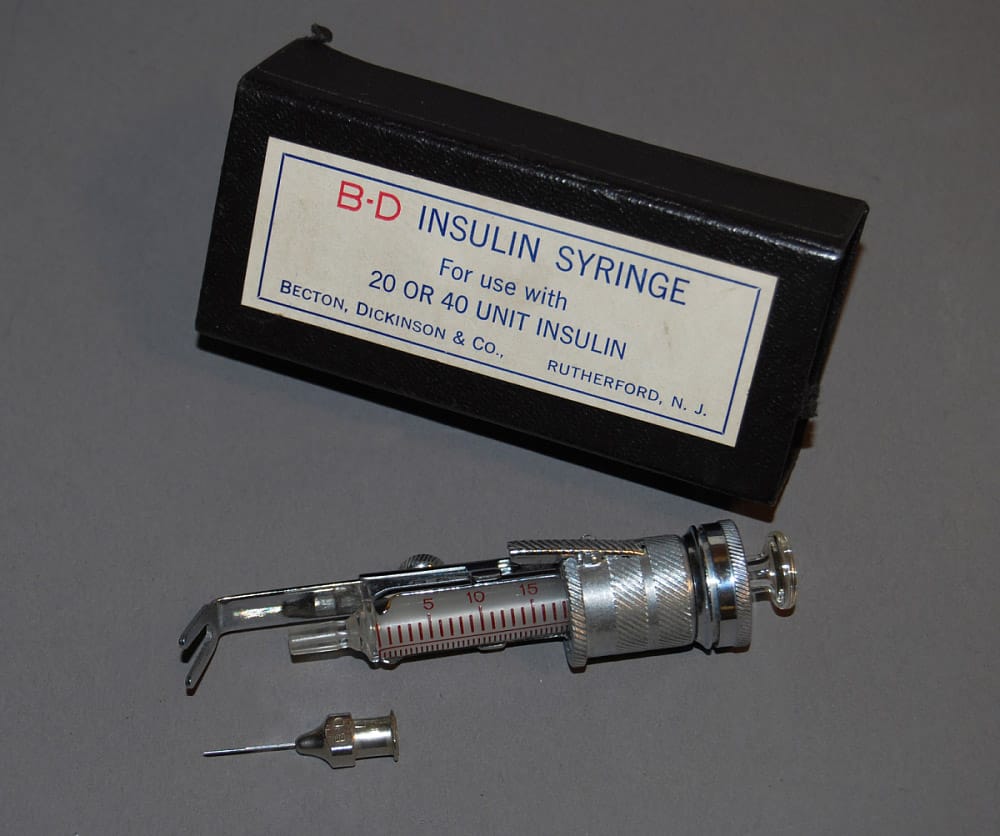
B-D Insulin syringe
Source: B-D Insulin Syringe, Dr. Busher’s Automatic Injector. National Museum of American History. Made after 1932. https://americanhistory.si.edu/collections/search/object/nmah_730844
Pumps
After insulin injections had been around for a while, people became interested in delivering insulin continuously, in a manner more similar to how the pancreas would. So in 1963, Arnold Kadish invented the first insulin pump [3]. Interestingly, this was more than 20 years before the first insulin pen was introduced.
For the first insulin pump ever, it was actually quite advanced! It was a closed-loop system that delivered insulin based on automatic blood glucose sensing (kind of like Medtronic’s Automode or Tandem’s Control IQ!) [4] The problem with Kadish’s design really came down to its size. It was as big as a backpack! [4] Just not practical.
In 1973, the next insulin pump called the Biostator came around [4]. Like Kadish’s pump, it was also an ambitious closed-loop system. The Biostator was complicated—it involved blood withdrawal and mixing, continuous glucose monitoring, and delivery of both insulin and dextrose based on a set of algorithms programmed into a computer. Even larger than the backpack pump, the Biostator wasn’t even portable! It ended up only being used in short-term research studies [4].
In 1978, the Autosyringe insulin pump, affectionately nicknamed the “Big Blue Brick”, hit the scene [4]. As you can probably guess, it was about the size of a brick (and almost as heavy as one!) Better than a backpack, but still problematic.
Fun fact: the Autosyringe was invented by Dean Kamon who created the Segway in addition to other medical devices [5]
The first insulin pump
Source: Alsaleh, F. M., Smith, F. J., Keady, S., & Taylor, K. M. G. (2010). Insulin pumps: From inception to the present and toward the future. Journal of Clinical Pharmacy and Therapeutics. https://doi.org/10.1111/j.1365-2710.2009.01048.x
Early pumps such as these tended to have quite a few issues: infusion sets were unreliable and sometimes you even needed a screwdriver to change the basal settings [4].
It wasn’t until the 90s that insulin pumps started to really evolve into what we are familiar with today. Now there’s so many options—Medtronic, t:slim, Omnipod, Ypsomed etc.–pump users can pick which works best for them.
Biostator
Source: Alsaleh, F. M., Smith, F. J., Keady, S., & Taylor, K. M. G. (2010). Insulin pumps: From inception to the present and toward the future. Journal of Clinical Pharmacy and Therapeutics. https://doi.org/10.1111/j.1365-2710.2009.01048.x
Autosyringe insulin pump
Alsaleh, F. M., Smith, F. J., Keady, S., & Taylor, K. M. G. (2010). Insulin pumps: From inception to the present and toward the future. Journal of Clinical Pharmacy and Therapeutics. https://doi.org/10.1111/j.1365-2710.2009.01048.x
Pens
The first insulin pen (the NovoPen®) was introduced by Novo Nordisk in 1985 [2]. With an insulin cartridge, short needle, and incremental dosing, the pen served as a more accurate and convenient way to deliver insulin than vials and syringes. Newer insulin pens also have more user-friendly features such as calculation and memory functions [2].
Inhalers
As an alternative to subcutaneous (under the skin) insulin delivery, developers have explored insulin delivery to the lungs. Thus, inhalers are the new wave of insulin delivery devices. In 2006, the first inhaled insulin product, Exubera®, was approved by the U.S. FDA [2]. However, the dry powder formulation taken with the help of an inhaler was quickly withdrawn from the market in 2007 due to possible safety concerns [6]. More recently, another inhalable insulin with a smaller and sleeker delivery system, Afrezza, was launched in 2014. It has not yet been approved in Canada [7]. The inhaled delivery route allows insulin to hit the bloodstream quicker, thus making Afrezza ultra rapid-acting.
Afrezza inhaler
Source: Meet Afrezza, https://afrezza.com/meet-afrezza/
As you can see, in the one hundred years since insulin was discovered, delivery methods have really changed. Even seemingly minor improvements to injections and pumps can have a huge difference for the user, so we’re grateful for how far we’ve come!
References
[1] Selam, Jean-Louis. “Evolution of diabetes insulin delivery devices.” Journal of diabetes science and technology vol. 4,3 505-13. 1 May. 2010, doi:10.1177/193229681000400302
[2] Shah, Rima B et al. “Insulin delivery methods: Past, present and future.” International journal of pharmaceutical investigation vol. 6,1 (2016): 1-9. doi:10.4103/2230-973X.176456
[3] Fry, Andrew. “Insulin delivery device technology 2012: where are we after 90 years?” Journal of diabetes science and technology vol. 6,4 947-53. 1 Jul. 2012, doi:10.1177/193229681200600428
[4] Alsaleh, F. M., Smith, F. J., Keady, S., & Taylor, K. M. G. (2010). Insulin pumps: From inception to the present and toward the future. Journal of Clinical Pharmacy and Therapeutics. https://doi.org/10.1111/j.1365-2710.2009.01048.x
[5] “Dean Kamen.” FIRST Global, 13 Aug. 2019, first.global/dean-kamen/.
[6] Oleck, Jacob et al. “Commentary: Why Was Inhaled Insulin a Failure in the Market?.” Diabetes spectrum : a publication of the American Diabetes Association vol. 29,3 (2016): 180-4. doi:10.2337/diaspect.29.3.180
[7] Senior, Peter, and Irene Hramiak. “Fast-Acting Insulin Aspart and the Need for New Mealtime Insulin Analogues in Adults With Type 1 and Type 2 Diabetes: A Canadian Perspective.” Canadian Journal of Diabetes, vol. 43, no. 7, 2019, pp. 515–523., doi:10.1016/j.jcjd.2019.01.004.


